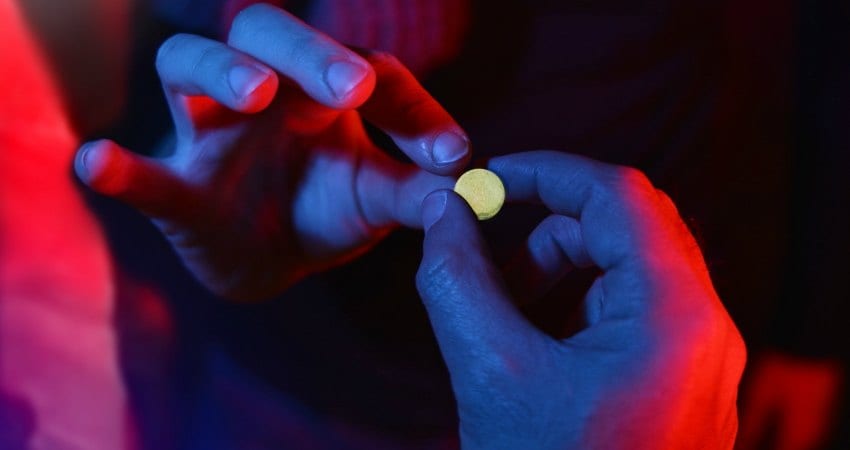The first word that must be associated with the drug ecstasy is the word ILLEGAL. This drug may actually be likened to hallucinogens. It is properly called methylenedioxymethamphetamine (MDMA). But the second word that may be associated with ecstasy is the word PARTY! Yes, this particular drug is known to be abused by teenagers at rave parties or dance clubs. It is also known as the “club drug.”
The drug reportedly “heightens” the effects of the party, hyping up the lights, the sounds, the colors, and the actions. Each aspect of the dance club may appear all the more appealing to the user. The main event, the dancing itself, becomes highlighted by heightened sensation of touch a user may experience. This drug takes the expression “Feel the party!” literally. Your teen may want to touch and be touched while he is high on this type of substance. The club’s steady, pounding beat coupled with the heightened sensations brought on by the drug may put the user into a dangerous trance.
A synthetic drug
Like anabolic steroids, ecstasy is a synthetic drug. The chemical MDMA is most likely produced in illegal laboratories which may be concealed in different parts of the country. But MDMA is not the sole chemical which may exist in ecstasy. Pills of ecstasy may also be mixed in with substances such as cough syrup (dextromethorphan), amphetamines (a drug found in dangerous diet pills), caffeine, and cocaine. A user may never really know what exactly comprises of the pill he/she is about to down.
Like other drugs, ecstasy has its own nicknames as well. Some common names are the following: love drug, hug, clarity, Adam, beans, lover’s speed, X, XTC, and E.
This drug is normally in capsule or pill form. The tablets or pills may even come in a number of colors or with designs on the surface. Just like users of steroids that may ‘stack’ different steroids at a time, taking a number of pills at a time is referred to as “bumping” by ecstasy users.
What’s the real deal about ecstasy?
MDMA use can turn into abuse. What MDMA has in common with stimulants is that it can be addicting. Even if negative side effects begin to form and taking the drug hinders one from healthy social or personal relationships, the user may still take the drug. Even his/her health becomes second priority to the gnawing yearn for the substance. The actual point of addiction can be difficult to distinguish. A troubled teenager’s vulnerability to addiction can lie in his/her personal atmosphere.





